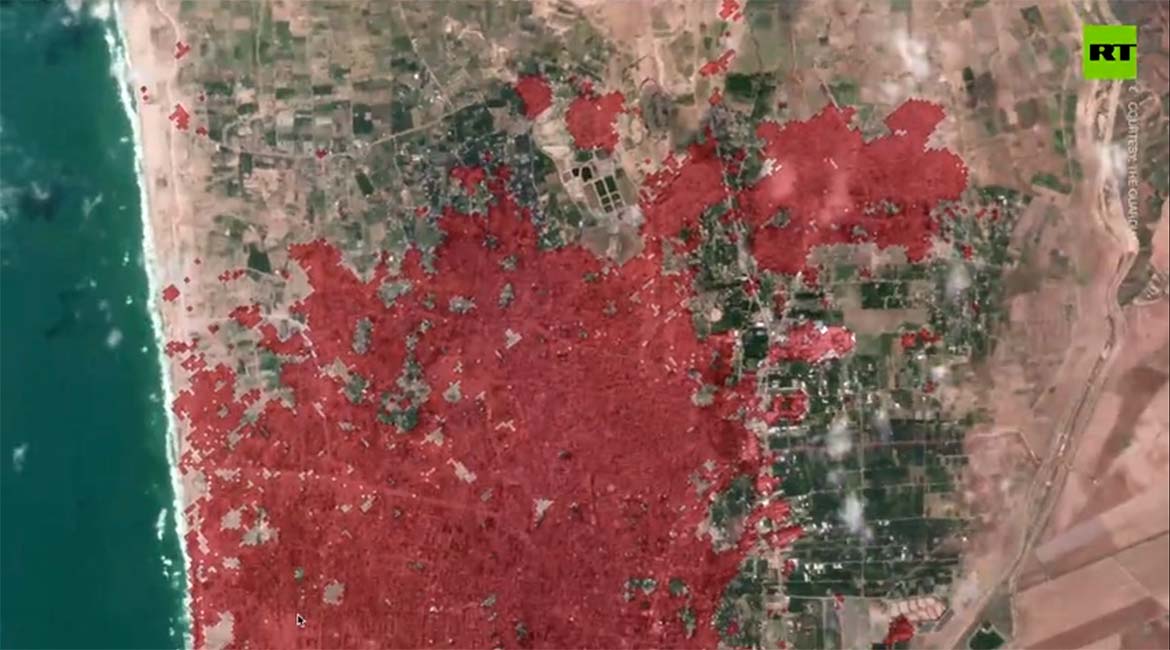In the wake of Israel’s relentless offensive against Hamas, the landscape of Gaza now lies in ruins, leaving hundreds of buildings, including schools, hospitals, and mosques, reduced to rubble.
The toll extends beyond infrastructure, reaching deep into the farmlands that have been either razed or rendered unusable. The scars left on Gaza’s people, land, and infrastructure may be irreparable. The assessment emerges from the scrutiny of three critical areas—Al-Zahra, Beit Hanoun, and Khan Younis.
Satellite images comparing Gaza before and after October 7 illustrate the extent of the devastation. Entire neighbourhoods have vanished from the map, leaving scorched earth and scenes of destruction.
The analysis conducted by Corey Scher from the City University of New York and Jamon Van Den Hoek from Oregon State University paints a grim picture, revealing that a staggering 62% of all buildings in Gaza have suffered damage or destruction, as of January 17.
The impact is not confined to Gaza City alone, where the intensity of the conflict has been most severe. Cities beyond the front lines and the surrounding countryside bear witness to the same dire fate.
Al-Zahra, once a prosperous neighbourhood in central Gaza City boasting three universities and several orchards, now lies in ruins. The universities, allegedly repurposed by Hamas as bases, are in shambles, surrounded by unrecognizable land where even the old roads have vanished.
Beit Hanoun, once a city enveloped by farmland, now bears the scars of war with armoured vehicle tracks crisscrossing its landscape. Hospitals accused of sheltering Hamas fighters have been obliterated, leaving one in ruins and the other heavily damaged.
Mosques and graveyards have not been spared, as Israeli forces target them in a bid to expose Hamas tunnel networks.
Khan Younis, situated far to the south and initially considered distant from the front lines, mirrors the devastation witnessed in other areas. Entire city blocks are missing, with even the rubble seemingly eradicated.
The boundaries between residential areas, infrastructure, and alleged Hamas strongholds have blurred beyond recognition.
The investigation was conducted by Balakrishnan Rajagopal, the UN special rapporteur on the right to adequate housing, alongside Martin Coward, professor of international politics at Queen Mary University of London, Ammar Azzouz, research fellow at the University of Oxford, and The Guardian.
Source: RT, ”Up to 62% of Gaza buildings damaged or destroyed – satellite data”

